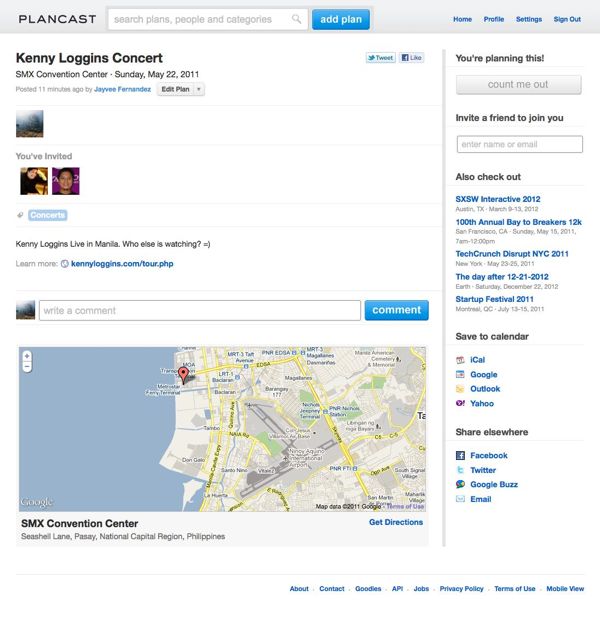
Nobody wants to watch Kenny Loggins with me 🙁
There’s a new web app I’m loving and it’s called Plancast. People who don a social media marketer hat call this thing “social scheduling” where users can share events they’re attending based on location and category. So I decided to try it out and I must say that it has its uses: (1) you don’t need to be a member per se to see events as you can get invites via Facebook and Twitter. (2) Unlike Facebook that’s very much promotes friend-centric events, Plancast pushes events around your area. Yes the app asks for your geo-location.
The screen grab above is me inviting two friends whom I think would highly appreciate watching Kenny Loggins Live in Manila on the 22nd of May. I can invite them, send them an automated Twitter DM and I can even add Plancast to my Google Calendar (or Outlook or Yahoo! Calendar) so any event I approve automatically gets scheduled and synced. Just like Facebook Events for some devices. Right now it only seems to work for the web and on the iPhone.
Of course, the business application here is quite obvious. If I search for “Makati” and your establishment has a happy hour event listed, that’s how I’m going to discover it. So the difference here is that unlike Facebook where you’re most likely going to get passive event invites from people who were tagged by friends, Plancast is a more pro-active events finder as it’s more targeted by location and interest.
As of today’s writing, there’s only one event listed under Makati: the Android April 2011 Community Meetup organized by Charo. I can share this event to friends outside Plancast as well. If your friends are on Twitter and Facebook you have the option of auto-subscribing to them when they go on board.
I suggest you give Plancast a try. And then we can schedule our own Zombie Apocalypse!!!